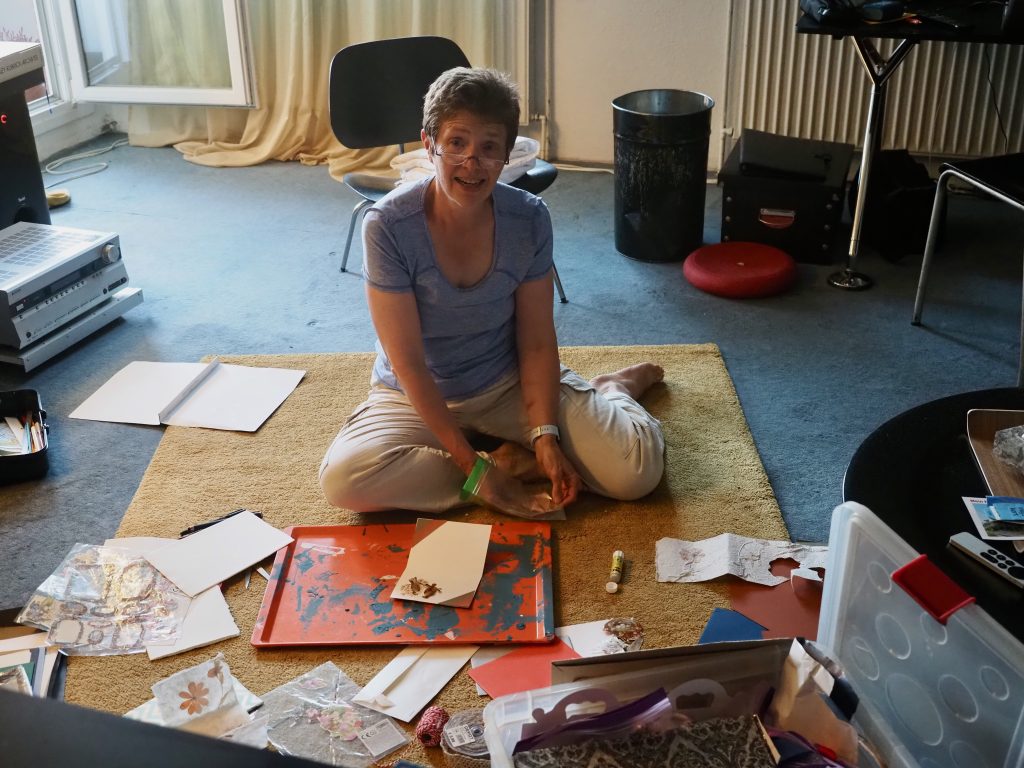This day was definitely a highlight! We had decided that we’d take one of our joint day trips today and go to the coast. I went to the grocery store while the others got ready for breakfast and grabbed a few things to make sandwiches (rolls, really), so we took off with a picnic lunch around 9:15 am, and made our way to Hamburg main station to head to Travemünde, which is a resort town on the Baltic coast that is only an hour and twenty minutes by train and has a train station directly by the beach. We had gone there 3 years ago and knew it was great for walking along the beach and on top of the high cliffs. We arrived around 11:45, ready for the Baltic! It was the perfect day for it—sunny and not windy, but only in the 60s so we did not break a sweat. First things first: We sat on a pier and had our sandwiches and carrots, and then took off on a 7-mile round trip walk.
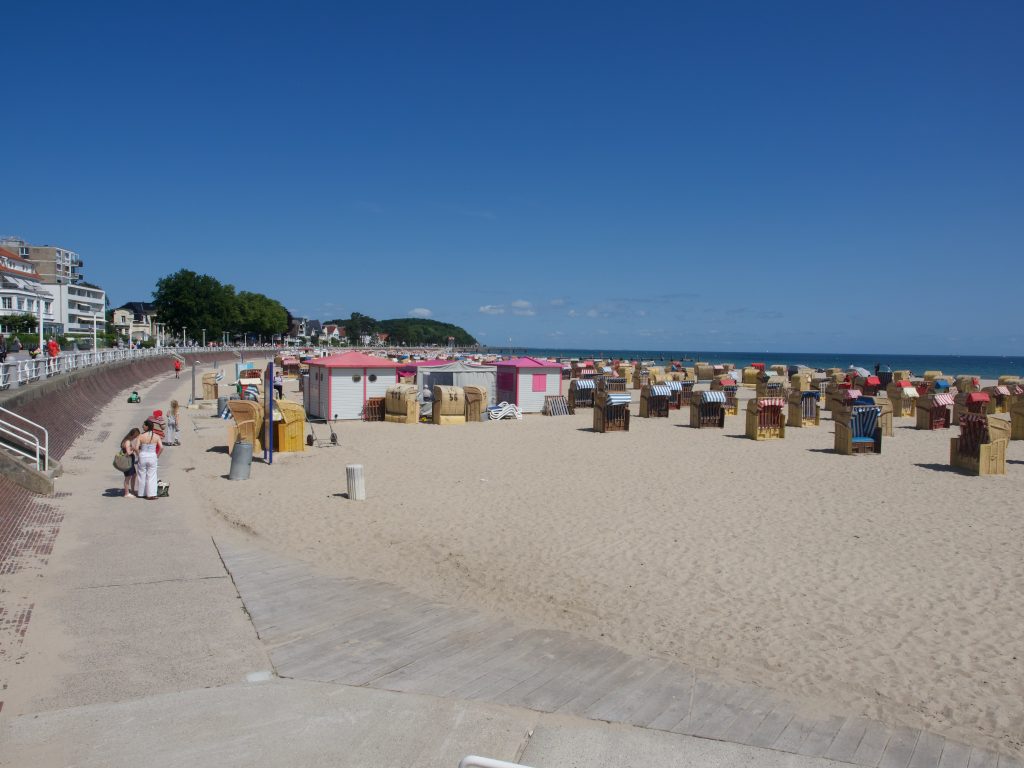
Once we had gotten past the resort portion of the beach and the little yacht harbor, walking along the partly sandy, partly rocky beach, we realized how much the coastline had changed in three years—the cliffs are pure sand (not sandstone) and many had collapsed (apparently quite dramatically in early 2024), taking part of the vegetation above (including mature trees) with them, and we had to duck under and climb over many tree trunks. But Andrea, in spite of her broken arm, did it all with panache and amazing energy. We were not completely sure whether the stairs we used last time to get up on top of the cliffs would still be there, and to Andrea and Peter’s horror, Mark and I actually went up a makeshift set of stairs carved into the sand to go up and explore.
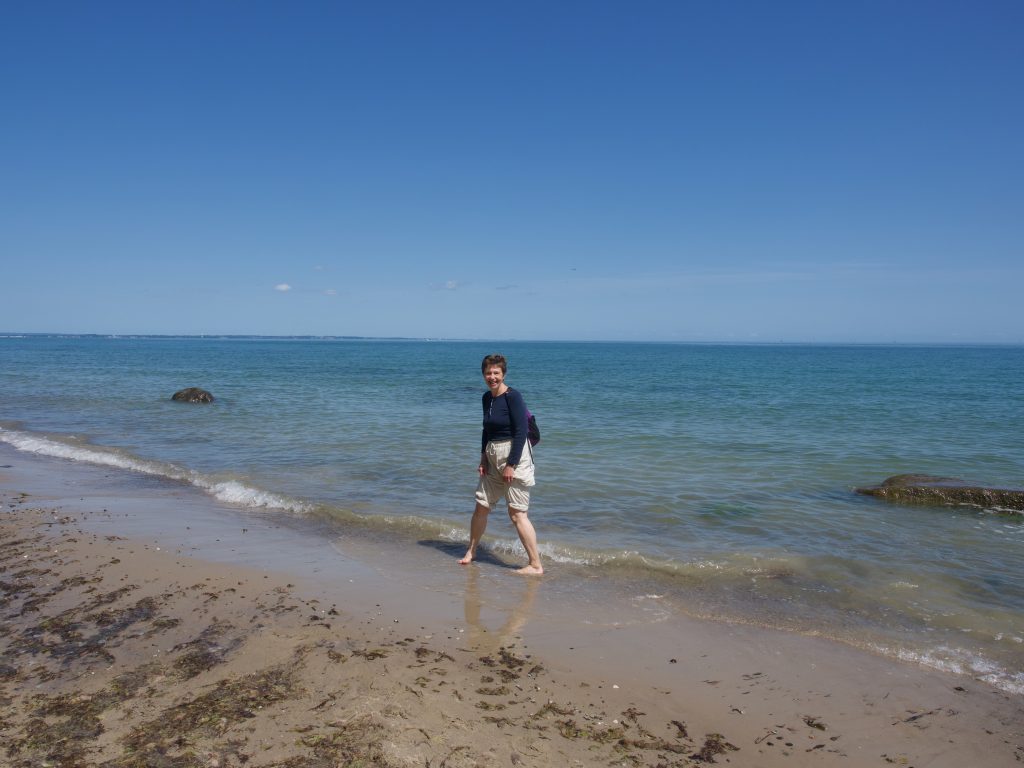
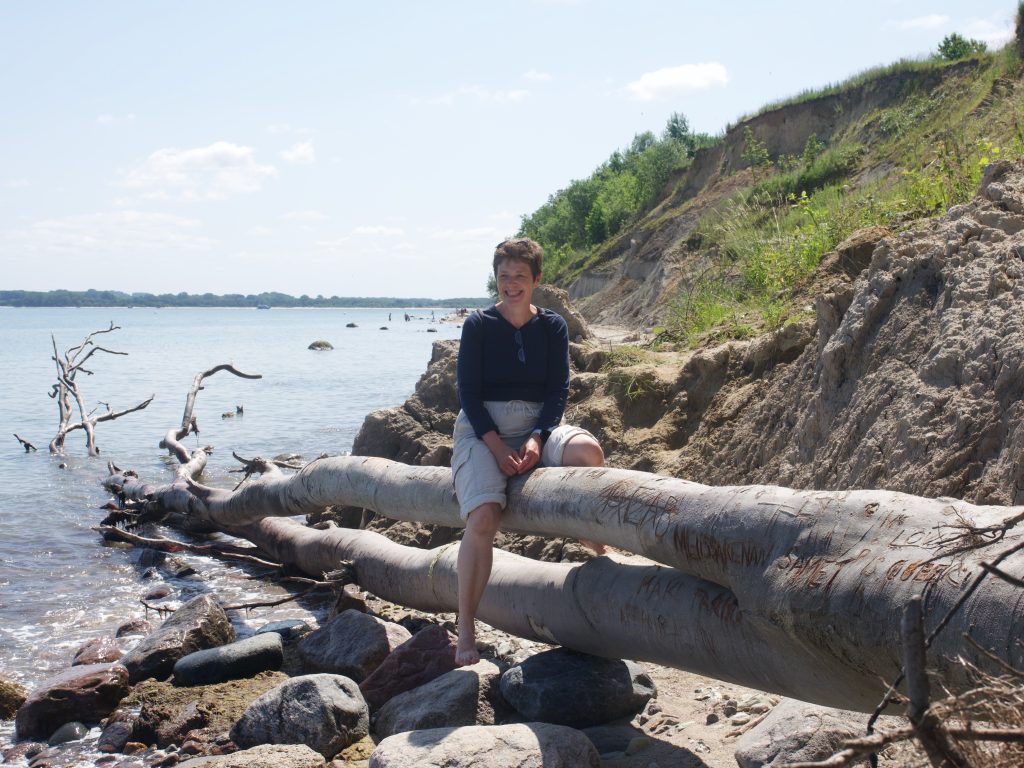
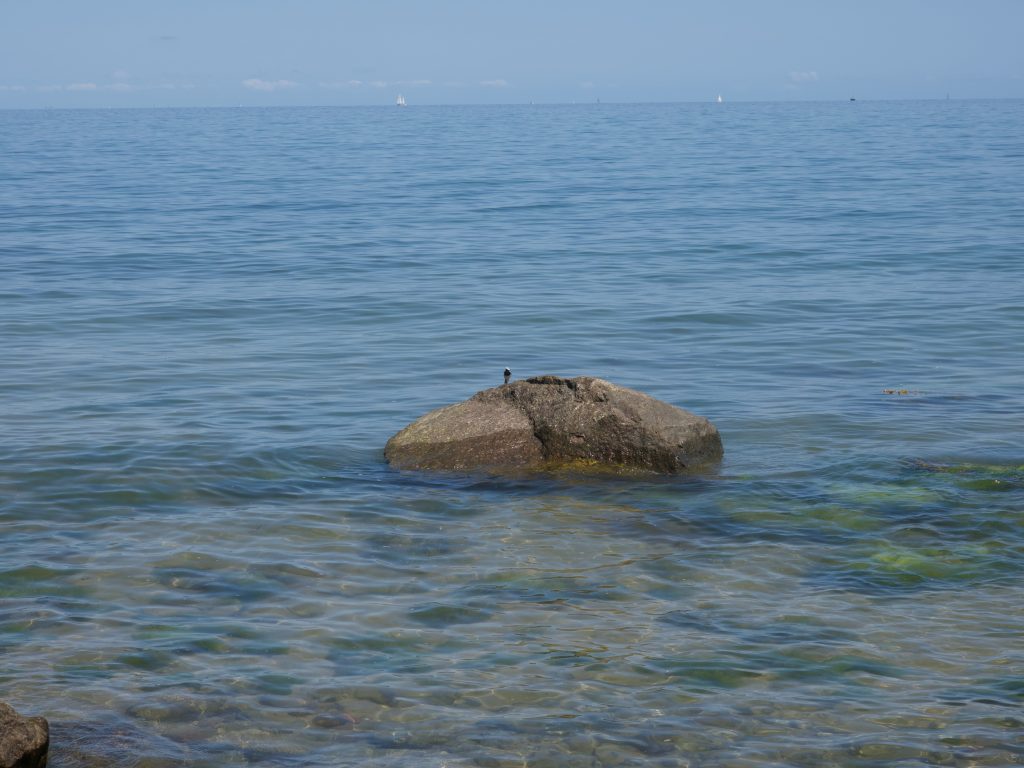
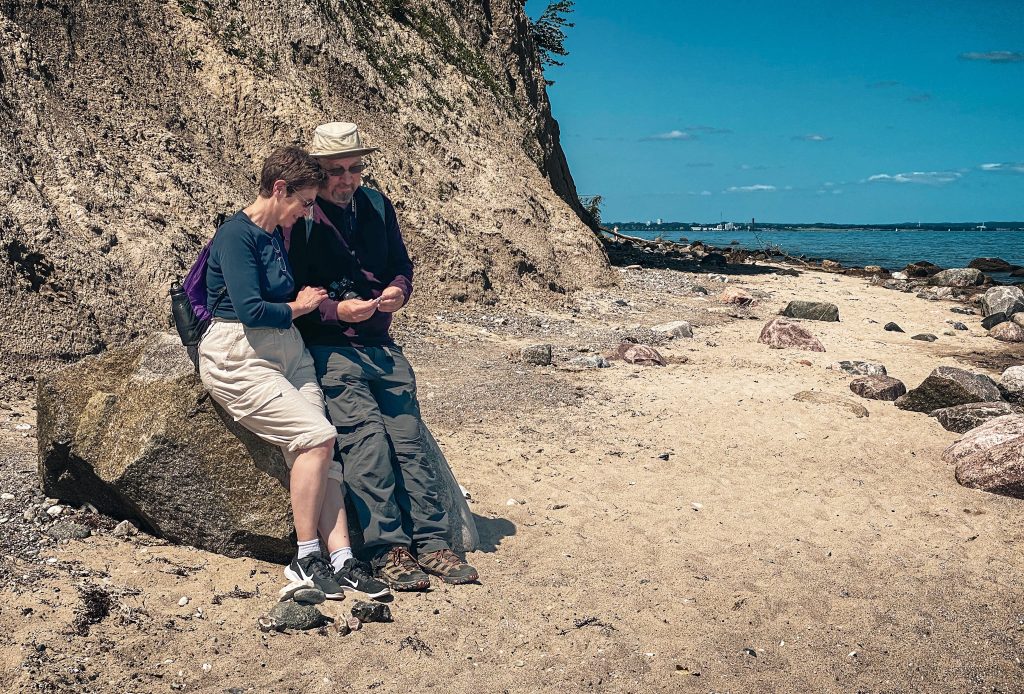
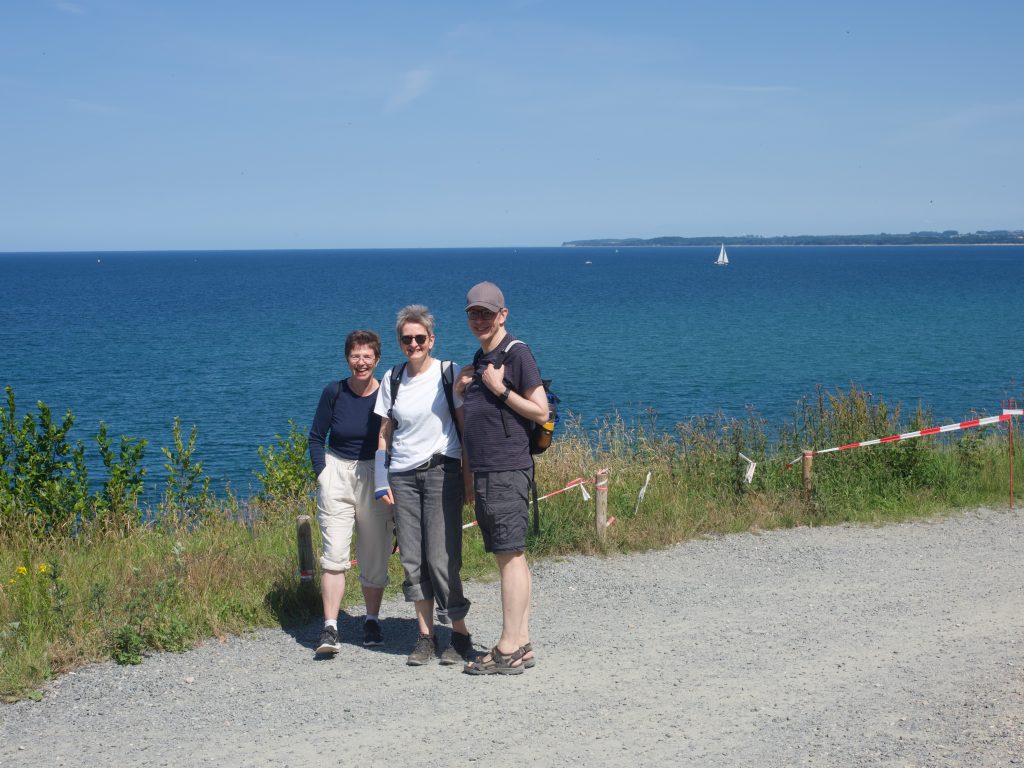
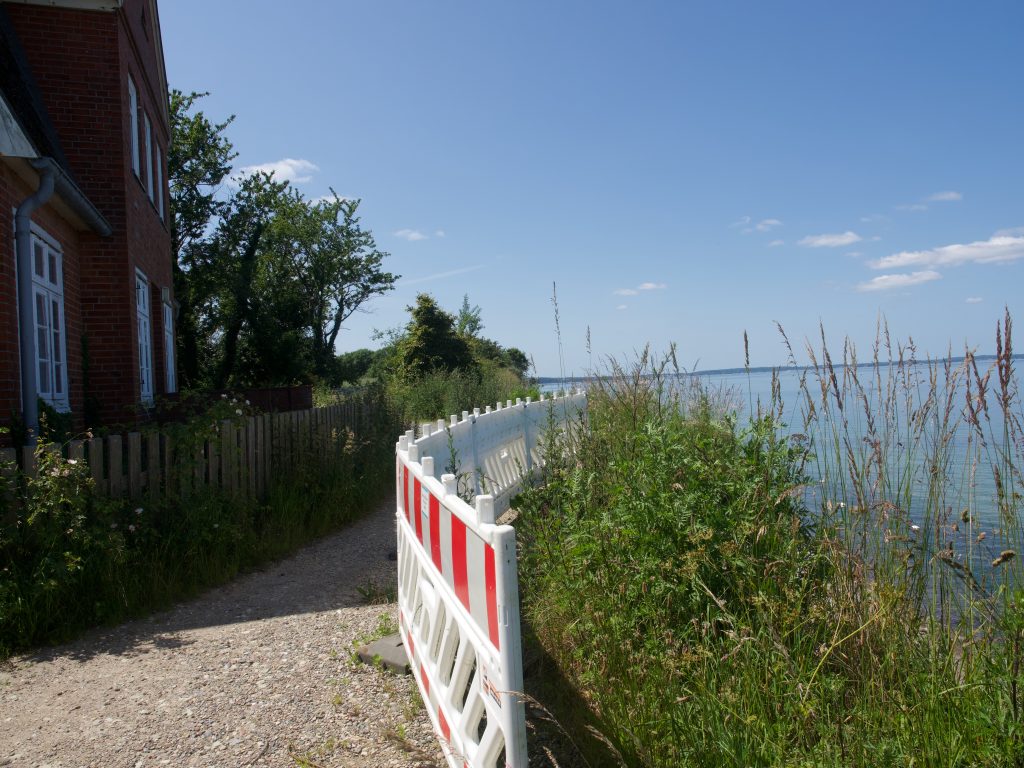
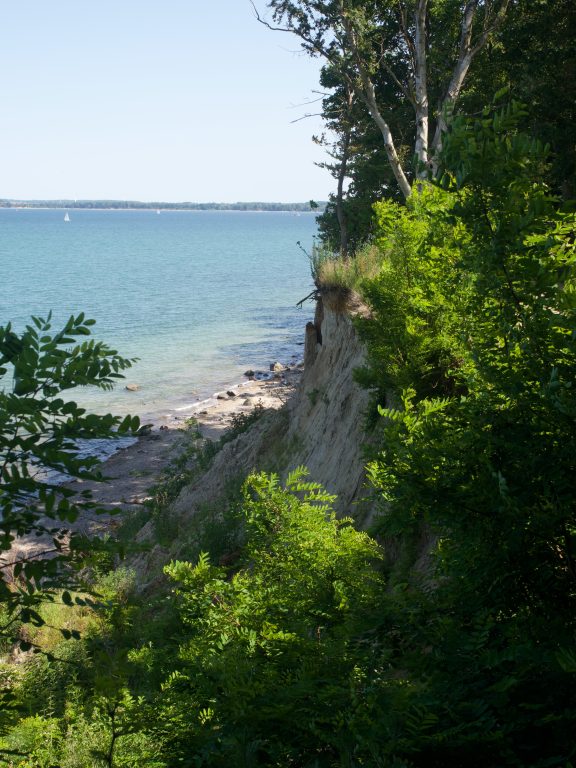
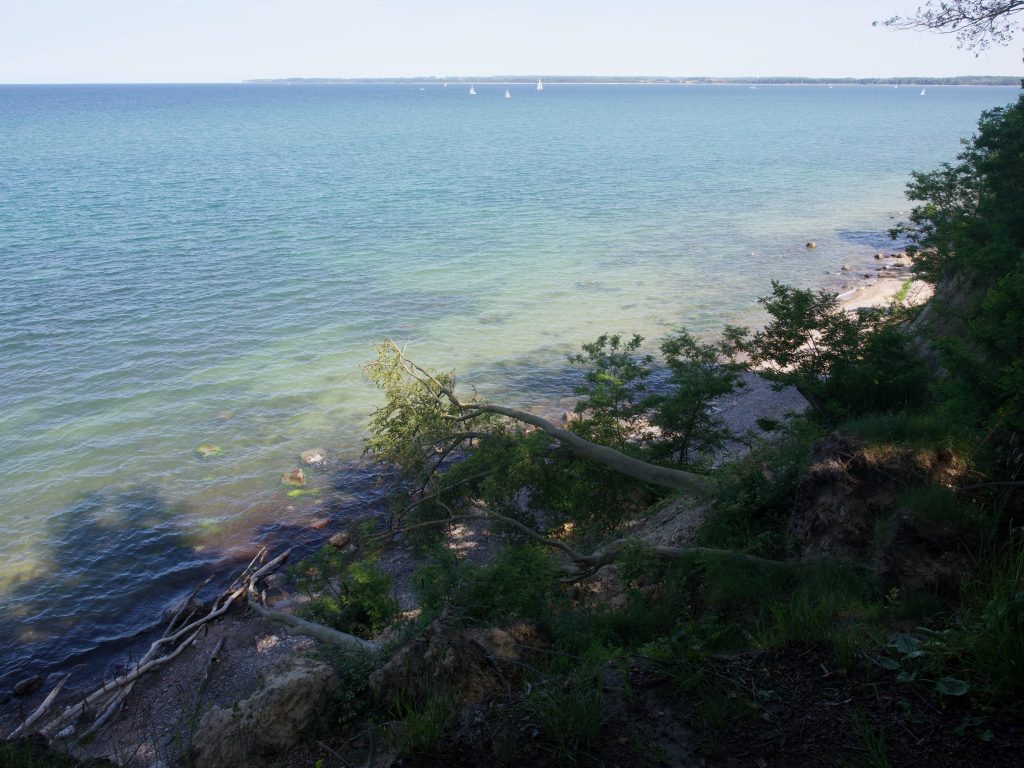
But Andrea and Peter were wiser and asked some of the other beach hikers, who confirmed the stairs were still in working order. We all met at the staircase, had some of the cherries we brought along, and then made our way back along the beautiful “Steilküste” (cliffs), seeing the little swallows that nest in the uppermost part of the cliffs up close as they whirred past us into the fields to catch bugs. There were some areas that were blocked off, including right outside a house that is now dangerously close to the cliffs (barely 5 meters/15 feet, and experts estimate that this area was about 200m / 600 feet from the edge in the 1870s!) But the hiking/biking path was both safe and very busy with bikes and pedestrians. Just as we did three years ago, we stopped at a cafe with mediocre cake, good coffee and fabulous views of the entire bay. Then we made our way back to the train station, and took the 4:34 pm train back to Hamburg (the only train that comes here is this train, once an hour, so the train station announces below its clock when the next train to Lübeck and then Hamburg is going to leave). Both ways were crowded, but not standing room only, and for once, the trains were not too hit and all the bathrooms worked. So it was a great trip all around!
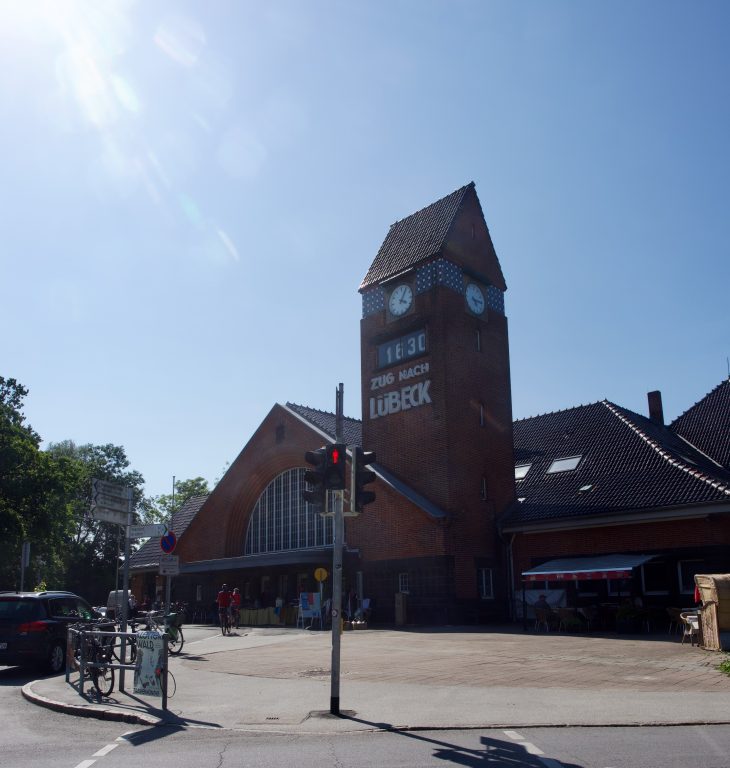
We were home shortly before 7 pm, and with a few more groceries, we made salad and porcini tortellini in a creamy sauce for dinner. Delicious, and followed by fresh local strawberries with ice cream and dark chocolate shavings for dinner. The little bit that was left of the day after our late dinner was spent playing around on computers, doing some laundry, and making birthday cards from Andrea’s amazing stash of craft supplies. A full and wonderful day.
